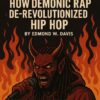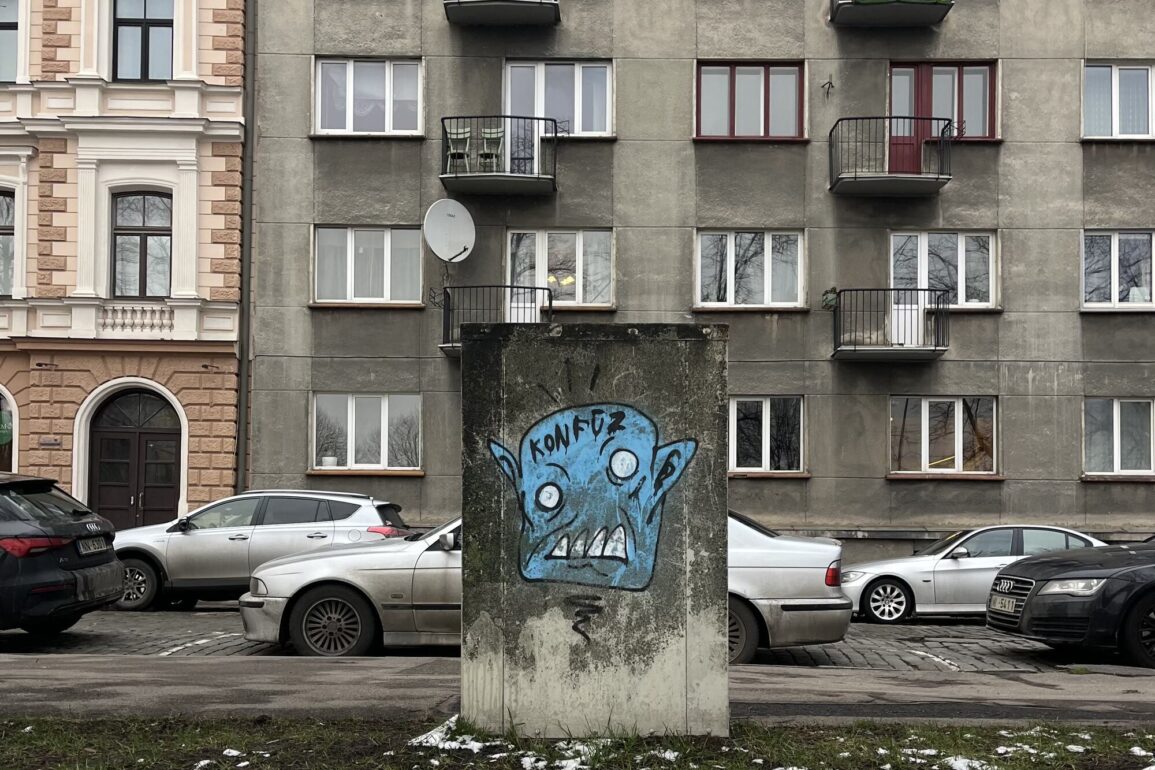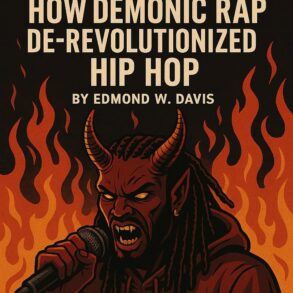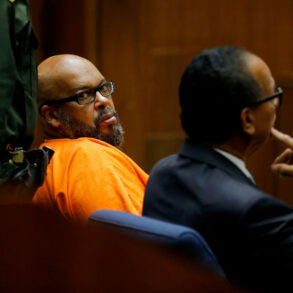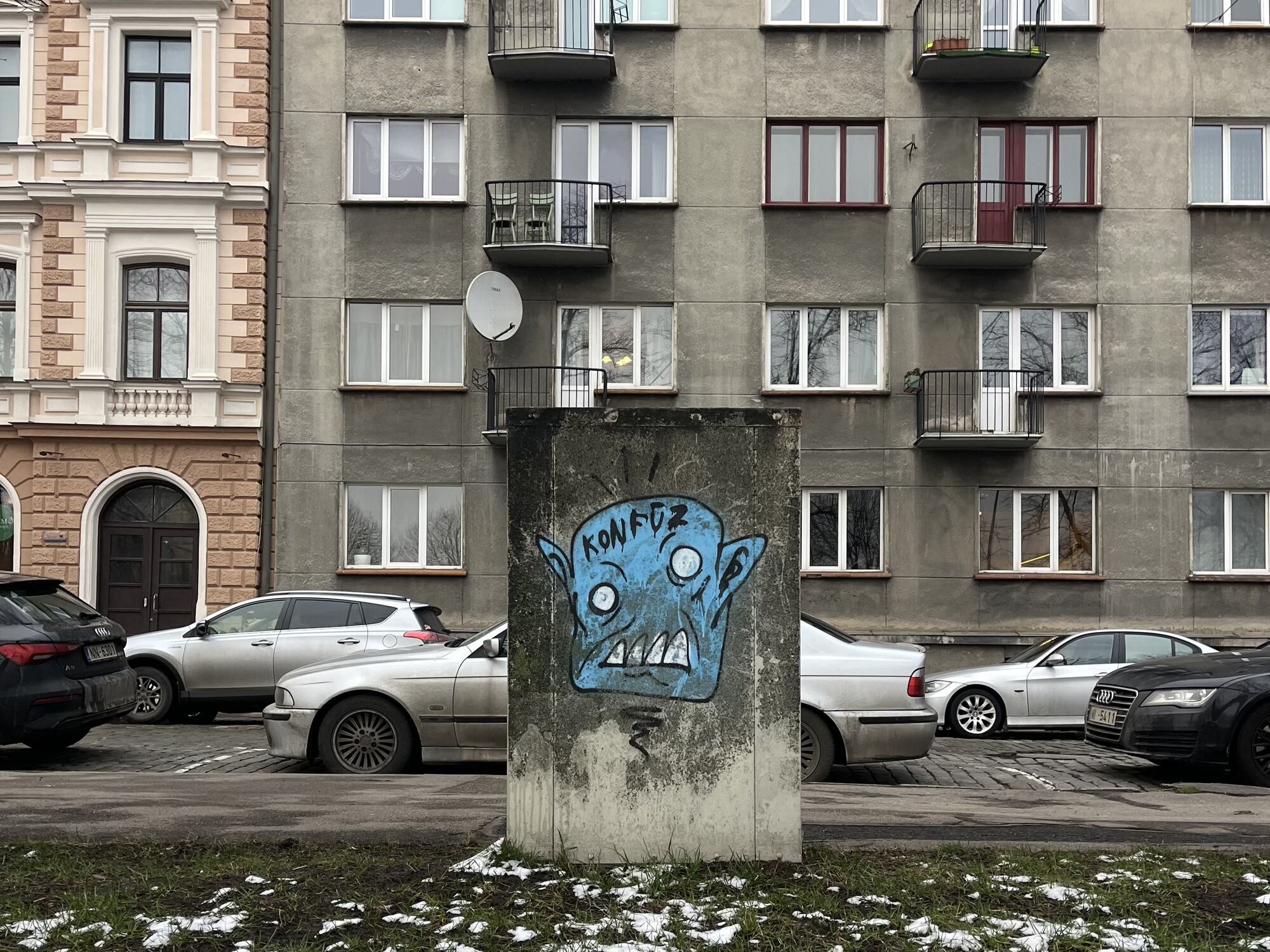
By Austin Zeglis
Medill Reports
RIGA, Latvia — Decades ago, Helmuts Steins discovered his love for American rap music by connecting with the beats he heard on the radio despite not being able to understand the English lyrics. When the young Latvian boy decided to pursue music production, he made his first songs by renting his neighbor’s computer for 50 cents an hour.
Now, Steins goes by the name Katapullt, and he has produced records for American hip-hop artists such as Wiz Khalifa, Lil Wayne and The Diplomats.
Katapullt is a part of the hip-hop scene in Latvia, where hip-hop music exists as both a tribute to the genre’s American origins and an unusual example of the myriad connections artists have with their inspirations. Many of the country’s popular rappers, producers and artists are influenced by their American counterparts and frequently collaborate with artists from the United States.
These collaborations, both between Latvian and American artists and inside Latvia itself, are helping the country develop a flourishing hip-hop culture halfway across the world from where the genre started.
“It’s impossible to make hip-hop music without American influence or Afro-American influence,” said Eliots, a Latvian artist who helped pioneer the country’s modern era of hip-hop.
He was inspired by American artists like Kevin Gates, Black Milk and Sean Price, the latter two being known for their contributions to the underground indie rap scene of the early 2000s.
“It’s music without boundaries,” Eliots said. “In Latvia, nobody was doing what I saw in the indie scene from the USA. Latvians were still rhyming like the 1990s, and the most popular (artists) were quite simple. There was no one here that was doing what I liked, which was complex rhyme schemes and clever wordplay.”
Inspired by those American artists, Eliots started making the music he wanted his country to hear.
“Why not try to build some new legacy?” he said.
Eliots describes his artistic tone as silly, balancing his desire to have fun while making music with wordplay and rhyming. That balance, paired with his ability to occasionally speak on serious issues through music, is reminiscent of Detroit artists he’s inspired by.
“Royce (da 5’9”) and Eminem’s ‘Scary Movies’, that’s a good example of stuff I like to do on the daily. But I also have some storytelling songs,” Eliots said. “Like Eminem in his prime.”
Latvia’s hip-hop community is constantly overlapping and working with one another. Edavardi, a rapper who followed in Eliots’ footsteps, mimics American indie rap from the 2000s. He and Eliots are frequent collaborators.
Skutelis, another multi-time collaborator of Eliots’, reached out to the latter when he started rapping because of their common influences and styles. Eliots’ 22-track album “Vecais Stafs,” released in 2016, includes nine collaborative songs with Skutelis.
Extensive partnerships like Eliots’ and Skutelis’ are emblematic of a quality of hip-hop music that extends from the genre’s birthplace in the U.S. to its presence in Latvia — collaboration. Pioneering figures of modern American hip-hop like Dr. Dre and Kanye West spent periods of their careers as part of “supergroups,” and Eliots is currently seeing success as a part of the Latvian group Singapuras Satins.
“It could be called a hip-hop project, but it’s everything,” Eliots said about the group. “It’s not only rap. We have Afrobeat songs and dance songs and pop songs and whatnot. Even some stuff that sounds like country.”
The group, which includes Eliots, Edavardi and five other rotating collaborators, currently has seven songs ranking in the top 200 songs on Spotify’s Latvia charts. “DEGVIELA,” a song off the group’s 2023 album “SUPER,” sits the highest of the four at 56.
These days, the American artists who influence Eliots belong to a newer generation. Inspiration from artists like Young Thug and Lil Uzi Vert has helped Eliots to parlay his reputation into modern-day success while still entertaining the fan base that has supported him since the beginning.
“He is arguably the most talented with the pen,” producer Katapullt said of Eliots’ writing ability in comparison with the rest of the Latvian rap scene.
Katapullt is currently based in Amsterdam but remains a central part of Latvia’s hip-hop scene. His connection to the U.S. is also strong, having collaborated with many notable American artists and finding inspiration ranging from Chief Keef to Curtis Mayfield, and from MIKE to Miles Davis.
“My initial goal was to work with artists that were established,” Katapullt said about how he started his career. “It was very unorthodox, because usually people like to approach (music) like a ladder — you start on the first step, and then you slowly climb up. I wanted to go for the top.”
Aside from the big-name American artists, Katapullt used to lease his beats to artists around the world, most of whom were also English speakers.
“That’s how I reached new people. Not the major labels, but the entry-level artists who couldn’t afford an exclusive rights license. They can spend 20 bucks on a beat from me, but it’s a lease license, so Johnny, Kenny and Armando can buy the same beat for 20 bucks, and it remains in my catalog,” he said.
Katapullt was enthusiastic about these kinds of international partnerships, but in terms of artists from Latvia, he thinks those who rap in English take too much from the birthplace of the genre instead of forming a distinctly Latvian path.
“As a human, do your thing. Whatever makes you happy. But from a fan perspective, I don’t think it’s necessary,” Katapullt said. “That’s not your mother tongue, and you‘ll never be as good as the people that speak English as their first language.”
Katapullt started making beats in 2006, and by 2008, he had already collaborated with respected American artists like Lil Wayne and Nipsey Hustle. One of his most prominent crossovers into American culture was a beat for the 2012 XXL Freshman Cypher, a yearly event hosted by hip-hop magazine XXL featuring now-well-known artists like Future and Machine Gun Kelly.
Katapullt finds himself drawn toward the conscious, alternative and “boom-bap” subgenres of hip-hop, all of which take inspiration from jazz and soul artists of the 1970s like Mayfield. But a lot of his most well-known songs are more basic.
“I’m always open to new stuff, and I think that’s what keeps me not burnt out and always curious about music,” he said.
“The circumstances fall into place sometimes where my biggest tracks sound more commercial, but I’m actually the classics guy. In my soul and how I started, that’s me.”
Austin Zeglis is a graduate student at Medill in the Media Innovation and Content Strategy specialization. Find him on X @austinzeglis.
This post was originally published on this site be sure to check out more of their content.


